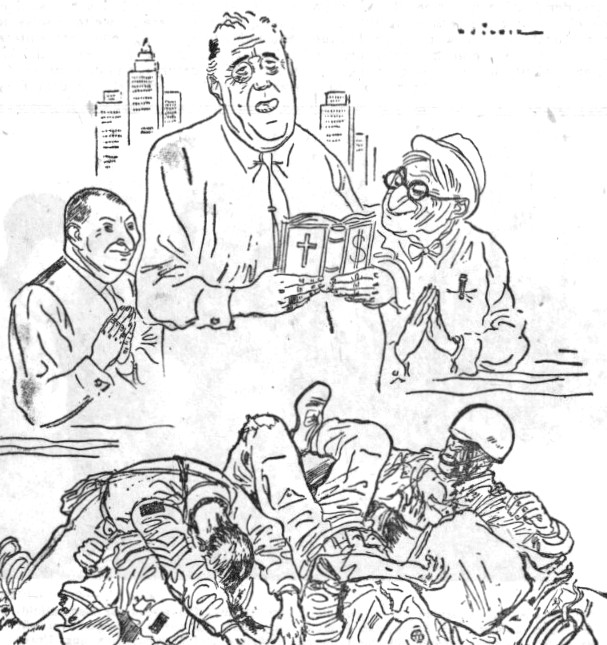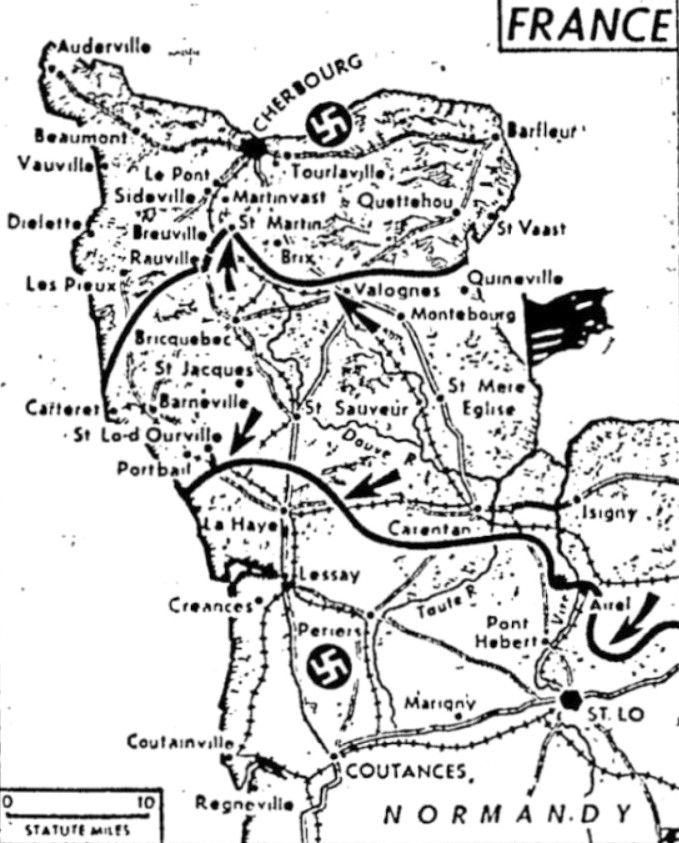Destroy 300 Jap planes at Saipan
Enemy hit in biggest Pacific air battle since Midway
USPACFLT HQ, Pearl Harbor, Hawaii (AP) –
U.S. carrier pilots and warship guns have destroyed an estimated 300 Japanese planes off Saipan to win the biggest Pacific air battle since Midway, while a land surge captured a vital airstrip and sealed off the southern end of the island.
In a vicious battle lasting several hours, the offshore task force smashed a sustained Japanese aerial assault Sunday. Adm. Chester W. Nimitz said the first information reported only one U.S. vessel damaged.
Imperial Japanese Headquarters declared, without confirmation, that 300 U.S. planes were destroyed and one battleship, two cruisers, a destroyer and one submarine were sunk during the battle. A broadcast enemy communiqué also said Japanese airmen were still attacking U.S. ships.
With the land battle still raging to their north and southwest, Seabees began preparing the newly-captured Aslito Airstrip, on Saipan’s Central Pacific middle defense arc. Its capture climaxed the long drive toward air bases strategically dominating the oceanic approaches to Tokyo.
Forces cut off
Pushing through tangled cane fields and swamps, U.S. Marines and Army troops traversed the island on a wide front to reach Magicienne Bay on the east coast, three and a half miles from the western landing beach. In this mile-and-a-half advance since Friday, some Japanese forces were cut off in the arrowhead of Nafutan Point, Saipan’s southeastern extremity.
The Japanese aerial thrust – their biggest since Midway – included some planes apparently based on distant carriers and using nearby shore bases for shuttle landings, the U.S. communiqué said.
It added that systematic U.S. bombing and strafing of airfields on Guam and Rota “sharply limited” the effectiveness of the Japanese shuttle land fields. Designation of these two islands, approximately 100 miles south of Saipan, indicated enemy carriers were some distance from the Marianas.
A Tokyo radio broadcast said “it has been announced in Tokyo that the Japanese Navy in the near future will win a great naval victory in the Central Pacific. We are all waiting for the news.” Probably intended solely for domestic propaganda, this announcement might be a hint that now-distant Japanese surface units would close in for action.
U.S. forces hold a five-mile-long coastal strip on the western shoreline, where they have expanded from their original beachhead at Agingan Point.
Japs call Saipan situation grave
By the Associated Press
Japanese fears that Saipan Island, where U.S. invasion forces are now engaging enemy forces, will be used as a base for shuttle bombing missions over Tokyo by B-29 Superfortresses flying from the island to China were expressed in a Berlin broadcast of a Tokyo dispatch today.
The dispatch said:
Competent Japanese sources are fully conscious of the seriousness of the situation. American heavy bombers, especially those of the B-29 type operating from Saipan air bases, would have no difficult in launching systematic attacks on Tokyo only 2,500 kilometers (1,550 miles) away.
In view of these facts, it is safely assumed that both sides will fight bitterly for possession of Saipan.




